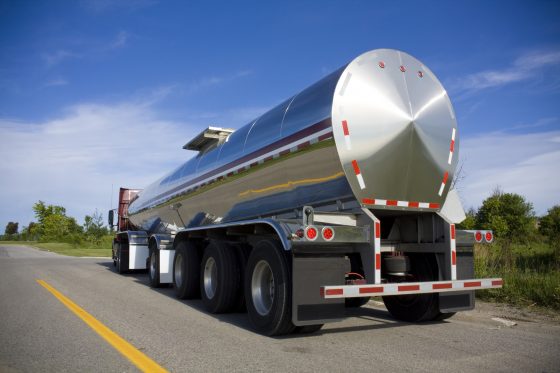Choose and use the right hose for the fuel you are storing or distributing to help prevent rare but catastrophic explosions.

Photo credit: istock.com/blondsteve
In 2017, a fuel transfer worker died when gasoline vapours were ignited by a spark from static electricity. (See Fuel tanker explodes, fatally injuring worker for details of this incident.) This type of tragedy can occur when fuel transfer hoses are not effectively bonded and grounded in accordance with the ULC standard for dissipating static electricity.
To learn more about this catastrophic risk, WorkSafeBC’s Risk Analysis Unit (RAU) inspected fuel transfer operations throughout B.C. Safety officers discovered transfer hoses were being used for fuels they are not designed for. They also found that some employers were not testing and inspecting hoses regularly as part of a preventive maintenance program.
WorkSafeBC is connecting with fuel transfer employers to help them reduce their risks. I asked Lucy Guo, industrial risk specialist in the RAU, what WorkSafeBC’s key message is for this group of employers who may not be aware of this risk.
Use the right hose
“When you think about the controls, it’s easy: Just use the right hose. That will save lives,” Lucy said. “It’s so painful to think about what happened to that [fuel transfer] worker and his family left behind.”
Employers need to select a fuel hose that is appropriate for the fuel being transferred. For example, a hose that is designed for diesel fuel may not be designed for transferring gasoline.
It’s important to talk to hose suppliers and vehicle maintenance contractors to ensure fuel transfer hoses have been properly selected and have the required controls in place. Among other requirements, purpose-built hoses must be effectively bonded and grounded. Equipment must also meet the ULC standards for dissipating static electricity.
Additional steps to reduce risk include regular inspection and testing of hoses, making sure grounding and bonding requirements of the equipment are fulfilled, and eliminating or controlling ignition sources where fuels are handled, used and stored.
Check equipment and train workers
It’s also important that workers are trained and informed about their risks. They need to know what type of hose is required and how to read the markings on the hose. They also need to know what to look for in pre-use inspections to make sure equipment is not worn out or damaged.
Workers with questions or concerns about the risks associated with fuel transfer should speak with their supervisor or joint health and safety committee representative.
In December 2021, with a goal to improve safety for workers in the fuel transfer industry, B.C.’s OHS Regulation was updated. It includes a requirement for ignition sources to be eliminated or controlled when combustible fuel is being handled. (Read more in this Truck News article, Preventing fires and explosions during fuel transfers.)
Find resources such as Non-bonded fuel hoses create fire and explosion hazards and other health and safety information for work in the fuel transfer industry from WorkSafeBC’s Fuel delivery webpage.
Thank you to Lucy for talking with me about this important outreach to the fuel transfer industry.


